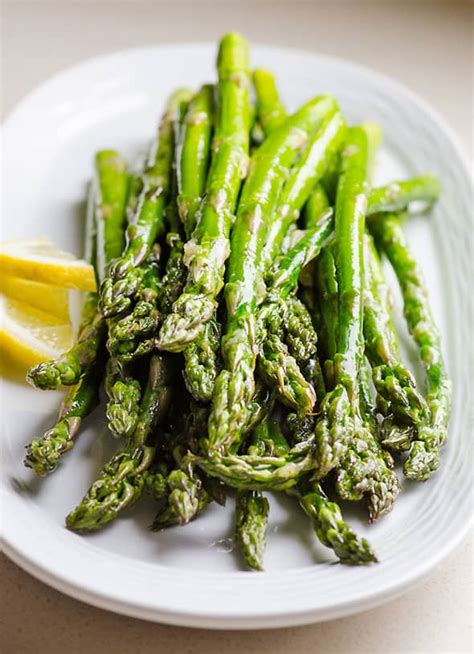Discover traditional Tongan ingredients and cooking techniques, explore flavor profiles, adapt recipes for dietary restrictions, and find modern interpretations of classic dishes.
Traditional Tongan Ingredients
Contents
Tonga Recipes
When it comes to Tongan cuisine, the island nation has a rich array of traditional ingredients that contribute to its unique and flavorful dishes. From the sustainable agriculture of root vegetables such as yams and taro to the abundance of fresh seafood, the traditional Tongan diet is deeply rooted in the resources of the land and sea.
One of the key ingredients in Tongan cooking is coconut, which is used in a variety of ways. From coconut milk to grated coconut flesh, this versatile ingredient adds richness and flavor to many Tongan dishes. Another essential ingredient is cassava, a starchy root vegetable that is used in both savory and sweet preparations. The use of tropical fruits such as bananas, papayas, and pineapples also adds a refreshing and tropical element to Tongan cuisine.
In addition to these staples, Tongan cuisine also features a variety of local herbs and spices such as turmeric, ginger, and garlic. These aromatic ingredients are used to flavor both meat and vegetable dishes, adding depth and complexity to the flavors of Tongan cuisine.
Overall, the traditional Tongan ingredients reflect the bounty of the islands, with an emphasis on fresh, locally sourced ingredients that are a cornerstone of Tongan cooking.
Exploring Tongan Flavor Profiles
Tonga is known for its rich and diverse culinary traditions, and exploring the flavor profiles of Tongan cuisine is a delightful journey for any food enthusiast. With a focus on fresh and locally sourced ingredients, Tongan dishes are bursting with vibrant flavors that are unique to the Pacific island nation.
One of the key elements of Tongan flavor profiles is the use of coconut in various forms. Whether it’s coconut milk, cream, or freshly grated coconut, this ingredient adds a rich and creamy texture to many Tongan dishes. The sweet, nutty flavor of coconut is a staple in Tongan cuisine and can be found in traditional dishes like lu sipi (braised lamb with taro leaves) and ‘ota ika (raw fish salad).
Another important aspect of Tongan flavor profiles is the use of fresh tropical fruits such as mangoes, papayas, and pineapples. These fruits add a delightful sweetness to dishes and are often used in salads, desserts, and as accompaniments to savory dishes. The tangy and refreshing flavors of these fruits complement the rich and savory elements of Tongan cuisine.
The use of root vegetables such as taro, yams, and sweet potatoes also contributes to the unique flavor profiles of Tongan dishes. These starchy and hearty vegetables are often used in soups, stews, and side dishes, providing a satisfying and earthy flavor to many traditional Tongan recipes.
Finally, the incorporation of spices and herbs such as turmeric, ginger, and lemongrass adds depth and complexity to Tongan flavor profiles. These aromatic ingredients are used to season meats, enhance the flavor of vegetables, and infuse dishes with a tantalizing aroma that is synonymous with Tongan cooking.
Adapting Tongan Recipes for Dietary Restrictions
When it comes to Tongan recipes, many traditional dishes may not align with certain dietary restrictions or preferences. However, with a few modifications, it is possible to adapt these recipes to accommodate a variety of dietary needs. Whether you’re following a gluten-free, dairy-free, or vegetarian diet, there are ways to enjoy the flavors of Tonga while still adhering to your dietary restrictions.
One example of adapting Tongan recipes for dietary restrictions is substituting ingredients to make a dish gluten-free. Instead of using traditional flour in dishes such as faikakai (Tongan pan-fried dumplings), you can use gluten-free flour or a combination of alternative flours, such as almond flour or tapioca flour. This allows individuals with gluten sensitivities or celiac disease to still indulge in this beloved Tongan dish.
For those following a vegetarian diet, many Tongan recipes can be modified by replacing meat with plant-based alternatives. Dishes like lu sipi (Tongan lamb cooked in taro leaves) can be transformed into a vegetarian-friendly version by using tofu or tempeh as a substitute for the meat. Additionally, incorporating hearty vegetables such as mushrooms, eggplant, and squash can enhance the flavors and textures of traditional Tongan dishes.
Another adaptation for dietary restrictions involves making dairy-free adjustments to Tongan recipes. Coconut milk is a common ingredient in Tongan cooking, but for those who are lactose intolerant or have dairy allergies, coconut milk can be used as a substitute for dairy milk in dishes like lu pulu (Tongan corned beef with taro leaves). It provides the same creamy consistency and richness without the need for dairy products.
By making these simple adjustments and substitutions, individuals with dietary restrictions can still enjoy the rich and vibrant flavors of Tongan cuisine. Adapting Tongan recipes for dietary restrictions allows for inclusivity and the celebration of traditional flavors while being mindful of different dietary needs.
Tongan Cooking Techniques and Methods
When it comes to traditional Tongan cooking, there are several unique techniques and methods that have been passed down through generations. One of the most iconic methods is the use of an umu, or earth oven, to cook food. Food is often wrapped in banana leaves and placed on hot stones at the bottom of the pit, with more hot stones placed on top to ensure even cooking. This method imparts a distinct smoky flavor to the dishes, and is often used to cook meats, fish, and root vegetables.
Another common technique in Tongan cooking is the use of coconut milk in many dishes. Coconut milk is made by grating the flesh of a coconut and then squeezing it to release the rich, creamy liquid. It is a staple in Tongan cuisine and is used to add richness and depth to curries, soups, and desserts. In addition to its flavor, coconut milk also has a natural thickening quality, which helps to create luscious, velvety sauces.
Frying is also a popular cooking method in Tongan cuisine. While deep frying is not as common, pan frying is often used to cook seafood, breadfruit, and other vegetables. The use of fresh coconut oil adds a unique flavor to the dishes, and the high heat results in crispy, golden-brown textures.
One of the most important aspects of Tongan cooking techniques is the emphasis on fresh, locally sourced ingredients. Many traditional recipes call for ingredients that are harvested or caught on the same day, ensuring the highest quality and most vibrant flavors. Additionally, the use of traditional tools and equipment, such as woven baskets and wooden pestles, adds to the authenticity of the cooking process.
Overall, Tongan cooking techniques and methods are deeply rooted in tradition and are essential to preserving the rich culinary heritage of the islands. By embracing these methods, cooks are able to create dishes that are not only delicious, but also reflective of Tongan culture and history.
Modern Interpretations of Classic Tongan Dishes
Modern interpretations of classic Tongan dishes are a way to honor the rich culinary heritage of the Tongan people while also putting a contemporary spin on traditional recipes. With globalization and the availability of diverse ingredients, chefs and home cooks have been experimenting with new ways to prepare and present Tongan dishes, resulting in innovative and exciting culinary creations.
One way to modernize classic Tongan dishes is by incorporating local produce that may not have been traditionally used in the past. This can add a fresh twist to beloved recipes, such as using exotic fruits like breadfruit or incorporating more vegetables and herbs into the dish for added color and flavor.
Another approach to modern interpretations of classic Tongan dishes is to experiment with cooking techniques and methods. For example, instead of the traditional underground oven known as ‘umu’, chefs may opt for grilling, pan-frying, or even sous vide cooking to achieve different textures and flavors while still staying true to the essence of the dish.
Furthermore, adapting Tongan recipes for dietary restrictions is a part of modernizing classic dishes. With more people following specific diets, such as gluten-free, vegan, or low-carb, it’s important to provide options that cater to these needs without compromising on taste and authenticity. This can be achieved by substituting ingredients, altering cooking methods, or creating entirely new interpretations of traditional dishes.
Finally, modern interpretations of classic Tongan dishes also involve exploring Tongan flavor profiles in new and creative ways. By mixing traditional seasonings and spices with global influences, chefs can create fusion dishes that pay homage to Tongan cuisine while appealing to a broader audience. This can introduce the unique flavors of Tonga to a wider demographic and promote cultural exchange through food.














